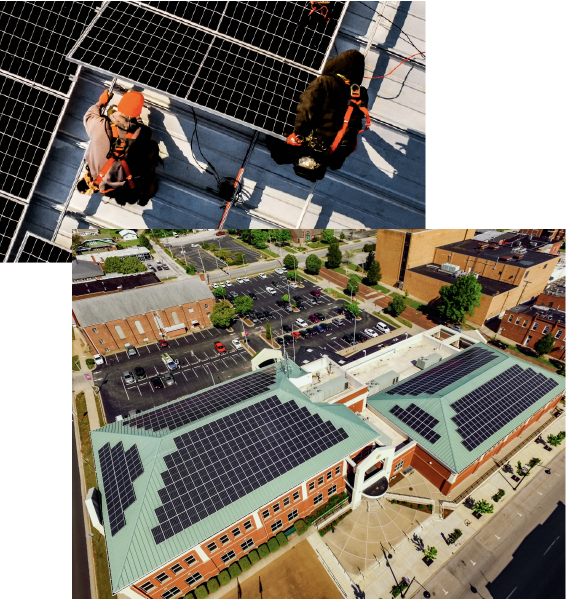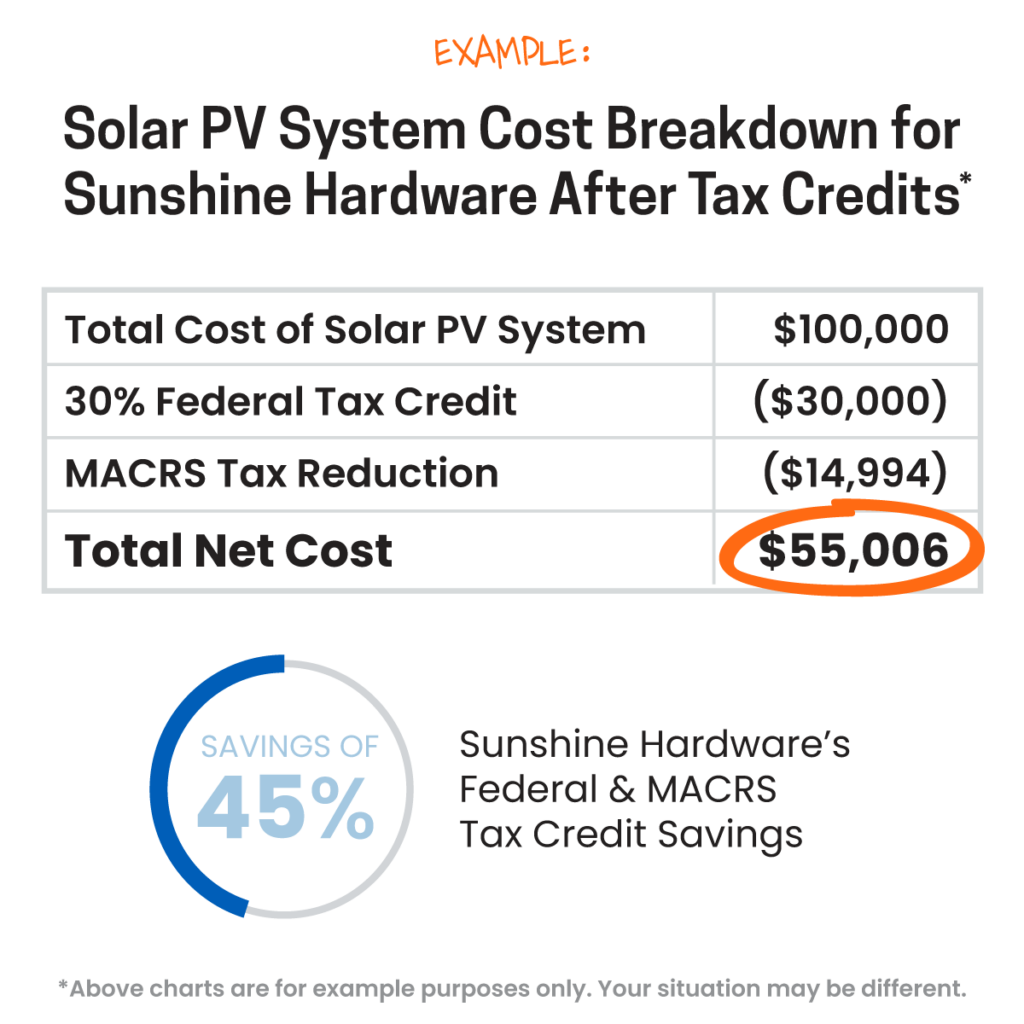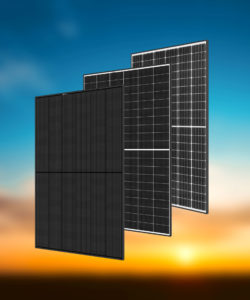
StraightUp Solar Named Top Workplace 2020 – 2024
Post-Dispatch Names StraightUp Solar A Winner of the Greater St. Louis Top Workplaces Award 5 Years Running! St. Louis, Missouri, July 8, 2024 – StraightUp
MACRS depreciation for each company may vary based on their tax situation. In our example below, for Sunshine Hardware the depreciable life of solar panels is 80% of the full solar system cost which may be depreciated roughly as follows: Year 1 – 20%, Year 2 – 20%, Year 3 – 20%, Year 4 – 20%, Year 5 – 20%. Find out how this is calculated below. Request a free solar consultation to show what your numbers could look like.
Note: This explanation of depreciation of the solar asset is only for informational purposes. We are not tax professionals, please consult your tax adviser to understand how solar tax credits and incentives apply to your unique situation.
MACRS Depreciation is different than solar panel depreciation (the gradual, slight decrease in energy production over the lifespan of an array). Learn more.
In addition to the Federal Investment Tax Credit for solar energy, business owners can take advantage of the MACRS depreciation bonus to reduce their taxes when investing in solar for their business. Together, these two tax credits allow businesses to recoup as much as 55% of their total solar system cost.
That’s on top of additional commercial solar incentives that may be available. In short, MACRS depreciation plays a significant role in making solar more affordable for your business.
StraightUp Solar provides custom solar solutions for companies in Missouri and Illinois. We can provide a customized quote that includes MACRS depreciation and other incentives you may be eligible to receive. Reach out today!

Depreciation is an income tax deduction that allows a taxpayer to recover the cost or other basis of certain property. It is an annual allowance for the wear and tear, deterioration, or obsolescence of the property. The larger the depreciation allowance the smaller the overall tax liability. Depreciation is a deduction, reducing the taxable income of the business. Less taxable income can reduce your tax liability.
The Modified Accelerated Cost Recovery System (MACRS) allows businesses to speed up their return on investment by reducing the length of time the tangible property expense is recovered. The depreciable life of a solar PV system is 5 years under the MACRS schedule, significantly less than the 30+ year life of a solar PV system. MACRS is only for business owners, there is no depreciation allowance for homeowners. In order for a business to be allowed a depreciation deduction, the business must own the solar PV system.
Here’s an example on how the Federal Investment Tax Credit (FITC) and the Modified Accelerated Cost Recovery System (MACRS) can be used to reduce a business owner’s tax liability when purchasing a solar PV system.
In 2023, Pat, owner of Sunshine Hardware invests in a solar PV system for $100,000. The Federal Investment Tax Credit is set at 30% of the value of the system until 2032. So, Pat can subtract $30,000 immediately from the business’s tax liability.
When the Federal Investment Tax Credit is claimed for a business, accelerated depreciation rules allow the full tax basis minus half of the FITC to be depreciated over a five year MACRS depreciation schedule. For Pat, the depreciable basis is $85,000, after applying the FITC (100% – (30%/2)).
The MACRS depreciation schedule starts at 80% of the depreciable basis for 2023, and declines by 20% until reaching 0% by 2027 (i.e. in 2024 the percentage will be 60%). To calculate the bonus depreciation for a solar PV system in 2023, multiply $85,000 by .80 = $68,000.
Now to calculate the accelerated depreciation allowance of the solar PV system. Assuming this five-year recovery period, a half-year convention, and a 200% declining balance method, IRS Publication 946 Table A-1 lists the depreciation rate as 20% for Year 1. Sunshine Hardware calculates its accelerated depreciation by taking the difference between the original depreciable basis and the amount claimed for the bonus depreciation and multiplying by the depreciation rate (.20). The 20% depreciation rate will be used each of the five years for a solar PV system.
0.20* ($85,000-$68,000) = $3,400
Now, let’s assume Sunshine Hardware has a federal tax rate of 21%. The net tax impact of the depreciation deduction is
0.21*($68,000+3,400) = $14,994. This amount can be subtracted from the tax liability.
This chart pictured here summarizes Pat’s reduced tax liability for investing in a solar PV system at Sunshine Hardware.

With just federal incentives, Pat’s solar PV system has been reduced by 45%! This does not even take into account the energy savings from the system and available state and utility incentives. For more information on MACRS and other incentives for solar for business see this U.S. Department of Energy fact sheet. Reach out today for a solar quote to see how solar can add up for your Missouri or Illinois business!

Post-Dispatch Names StraightUp Solar A Winner of the Greater St. Louis Top Workplaces Award 5 Years Running! St. Louis, Missouri, July 8, 2024 – StraightUp

Solar Panel Depreciation: The Secrets of Peak Performance When considering solar for your home or business, you may have wondered about solar panel depreciation. Like

Did you know solar panel batteries can last up to 15 years? As technology advances, the durability and longevity of solar panel batteries are improving.